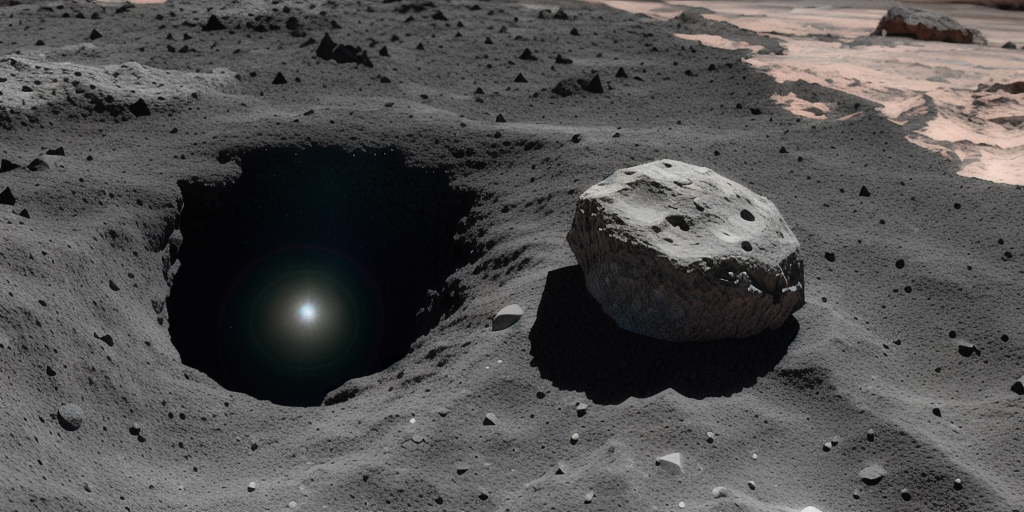
Space weathering effects in Bennu asteroid samples
How did your country report this? Share your view in the comments.
Diverging Reports Breakdown
Space weathering effects in Bennu asteroid samples
Evidence for space weathering on particle surfaces was identified using SEM of particles extracted from contact pad OREX-452000-0. We used a JEOL 7900F scanning electron microscope at NASA Johnson Space Center (JSC) operated in low vacuum mode to image the contact pad particles without a conductive coating. For other aggregate samples, we used an FEI Quanta3D at JSC and the FEI Helios Nanolab 660 G3 in the University of Arizona’s Kuiper-Arizona Laboratory for Astromaterials Analysis (K-ALFAA) The cosmogenic 21Ne concentrations used here were derived by two- component decomposition of the measured Ne composition between the trapped end-member and cosmogenically typical for material of CI chemical composition. The complete noble gas data set, obtained at ETH Zurich with a custom-built sector-field mass spectrometer (all isotopes of He–Xe), is presented in a companion paper21.
The complete noble gas data set, obtained at ETH Zurich with a custom-built sector-field mass spectrometer (all isotopes of He–Xe), is presented in a companion paper21. The cosmogenic 21Ne concentrations used here were derived by two-component decomposition of the measured Ne composition between the trapped end-member and cosmogenic Ne typical for material of CI chemical composition. Samples were transported to ETH from the NHM London in N 2 atmosphere. They were subsequently handled in a N 2 -filled glove box, weighed using a Mettler Toledo UMX2 ultra-microbalance in hermetically sealed micro-weighing containers and loaded into an infra-red laser cell without any exposure to air. Three particles (OREX-800032-102, OREX-800032-103 and OREX-800032-104) were placed individually into the laser chamber and pumped down to 10−10 mbar. Each particle was melted completely in two steps using a Nd:YAG laser working at 1,064 nm wavelength. Gases released upon exposure to the infra-red laser were purified, cryogenically separated into He–Ne, Ar and Kr–Xe and analysed according to standard procedures41.
We received ~12 mg of an aggregate sample OREX-803014-0 of loose, unsorted material <1 mm in size for analysis of cosmogenic radionuclides by accelerator mass spectrometry (AMS). The sample was split into 5-mm-sized particles and a bulk sample, OREX-803047-0, of 9.85 mg. We dissolved the bulk sample along with Be and Cl carriers in a HF/HNO 3 mixture. After dissolution, we separated Cl as AgCl for analysis of cosmogenic 36Cl by AMS. A small aliquot of the dissolved sample was split for chemical analysis by inductively coupled plasma optical emission spectrometry. The chemical composition of the sample (Supplementary Table 3) is consistent with that of a similar aggregate sample, OREX-803015-0, measured previously by others1. We then added 1.5 mg of Al carrier and separated Be and Al from the remaining solution for analysis of cosmogenic 10Be and 26Al by AMS. The AMS measurements of the 10Be/Be, 26Al/Al and 36Cl/Cl ratios were performed at the Purdue Rare Isotope Measurement Laboratory42. The measured ratios were normalized to those of well-known AMS standards22,23,24. From the normalized ratios, the amount of Be, Al and Cl carrier, and the sample mass, we calculated the 10Be, 26Al and 36Cl concentrations of the sample. Concentrations (in atoms per gram) wre then converted to disintegrations per minute per kg and are reported in Supplementary Table 3. The measured concentrations of 10Be and 26Al are compared with production rates for 2π irradiation from model calculations25, adopting the bulk composition of Bennu aggregate samples1. If the measured concentrations represent saturation values during steady-state exposure conditions, they provide a direct measure of the irradiation depth of the sample.
We determined a SEP track exposure age from the track measurements in OREX-452001-0 by using the 1 AU track production rate calibration from ref. 18 and an r−1.7 model43 for the heliocentric decay of the SEP flux to account for the parts of Bennu’s elliptical orbit beyond 1 AU, where r is the heliocentric radius. The measurements were made on a FIB section prepared using the JSC FIB and images obtained using the JEOL 2500SE STEM at JSC.
The microcrater exposure age for OREX-4520001-0 was determined by measuring the number of definite craters in the measured area (~40 craters in 0.6 mm2 of surface area) and using the crater production rates from ref. 19 of ~0.3 craters per square centimetre per year for 2-μm-diameter craters and 0.08 craters per square centimetre per year for 1-μm craters (for a 2π exposure), giving exposure ages ranging between ~20,000 and 85,000 years. However, this estimate represents the minimum crater density for this particle because we did not count micrometre-sized pits or other circular features without melt as microcraters.
Source: https://www.nature.com/articles/s41561-025-01745-w
